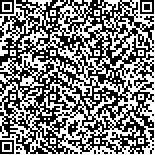下载中心
优秀审稿专家
优秀论文
相关链接
摘要

极化定标是极化合成孔径雷达应用的前提。传统极化定标方法以地面布设的人工定标器为参考,通过极化畸变模型对系统误差进行求解与标定。然而,人工定标器价格昂贵、数量稀少,每次定标任务都需根据传感器过境方向、雷达视角等信息进行设备调整;此外,现代雷达系统工作波位多、入射角调节范围大,不同视角获取影像的定标参数也不相同,这对地面定标设备的布设精度、调整的时效性提出了更高要求。为了及时、快速地完成极化定标,如何以自然界中的某些特殊地物作为人工定标器的替代品来完成定标具有重大的科学价值。本文综述了近年来国内、外提出的不依赖人工定标器的SAR极化定标研究进展(即自主定标)。首先阐述了极化定标的基本流程与极化质量评价体系;然后对近年来高精度自主定标相关研究进行了梳理,根据技术特点将其分为基于自然地物约束的自主极化定标、基于似角反射器的自主极化定标两类,对不同算法适用性进行了分析;最后对未来的研究方向进行了展望。
关键词:
合成孔径雷达(SAR) 极化 角反射器 自主定标The polarimetric synthetic aperture (PolSAR) system transmits and receives electromagnetic waves with different polarization to acquire the image measurements. Polarimetric calibration (PolCAL) is a critical stage for PolSAR image quality improvement. The general calibration technique relies on the ground deployed active and passive corner reflectors (CRs) to solve the residual system errors after the internal calibration, such as the crosstalk, channel imbalance, Faraday Rotation Angle (FRA), and so on. Although the best way to calibrate system distortion is based on ground reflectors, the manufacturing and deploying reflectors are time- and money-cost. For the common trihedral, rectangular, and pentagonal CRs, the angle bias of more than 1° between the metal plates would result in a 0.2-1 dB change of the Radar Cross Section (RCS). When the sensor wavelength increases, the ground-deployed CR length should also be enlarged to ensure that the RCS is high enough. A 1-m CR is usually required to calibrate a 0.05-m wavelength C-band satellite sensor, but a CR of more than 2 m is necessary to calibrate a 0.22-m wavelength L-band sensor. When calibrating the P-band BIOMASS, the CR length should be 5 m, which significantly increases the difficulties in the CRs manufacturing. Moreover, the azimuth and pitch angles of deployment reflector should be adjusted according the sensor pass direction and look angle. The current radar generally works on dozens of beam wave which demands heavy ground campaigns to accomplish with sensor configuration. During the operation period of the spaceborne SAR, the radiometric characteristics change with time, and the polarimetric distortions would change accordingly. Then it is of great importance to carry on the periodic calibration campaign. The regular performance of the calibration based on CRs undoubtedly increases the expenditure of time and effort. Therefore, it is vital to develop the calibration technique without using corner reflectors. This paper reports the recent research process of PolSAR calibration without using CRs. Firstly, we introduce the reason why non-reflector calibration technique is necessary and the evaluation criteria of image quality is given to help readers better understand the radar distortion. Secondly, we classify the recent non-reflector calibration methods into two categories as nature media-based calibration and corner reflector-like calibration. The properties of two categories are subsequently presented. The ways refer to the natural media, such as the in-scene vegetation in FRA-free area, to estimate the crosstalk and the cross-pol channel imbalance, while the co-pol channel imbalance may remain a constant or be solved using one or more CRs. In the scenes affected by FRA coupling with other distortions, a calibrator with no cross-polarized return may still be needed to increase the constraint for searching solutions. To get rid of the CRs, the special natural media or the CR-like point targets help to estimate the amplitude, phase of the co-pol channel imbalance and make outstanding achievements. Finally, the conclusion is given in the last section. The research on non-reflector calibration technique is meaningful and of great value for the SAR system with long wavelength.

